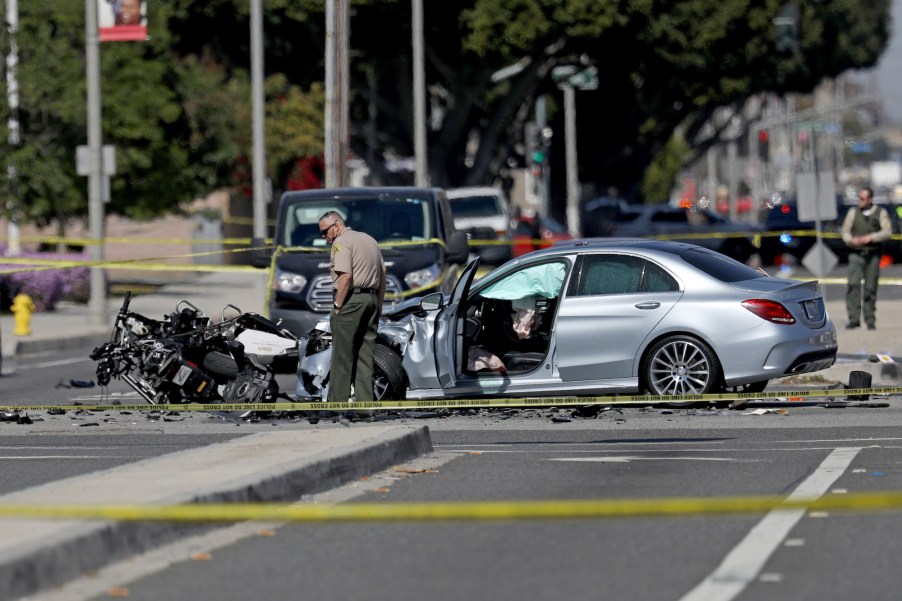
Motorcycle Deaths Are Up a Scary Amount as Car Fatalities Drop, Forbes Reports
For adrenaline junkies or drivers who can’t afford a car, a motorcycle is one of the best options. A motorcycle is also cheaper to maintain and can be less expensive to insure, depending upon the bike. However, recent data shows motorcycles have become more dangerous as cars have gotten safer.
Of course, motorcyclists are more vulnerable because they’re completely exposed to injury and without advanced safety features. That’s not to say driving one is necessarily dangerous — riders can protect themselves with helmets and airbag clothing. Still, Forbes recently reported that motorcycle deaths are rising.
The latest numbers for motorcycle deaths
A 2018 NHTSA study showed that motorcycle drivers are 22 times likelier to be involved in a deadly crash. The fatalities per 100 million drivers steadily rose between 2009 and 2018, as high as 21 percent of drivers from 2015 to 2018. Fatalities were down by 5 percent in the final year of the study, but almost 5,000 motorcyclists still lost their lives.
At the same time, car fatalities have considerably decreased. Only 1.11 deadly accidents were reported per 100 million vehicles, a figure that continues to drop each year. Stricter ticketing laws and advanced driver safety technology have contributed to the decrease.
Are motorcycles getting more dangerous?
Driving a motorcycle isn’t inherently dangerous, but several factors contributed to the NHTSA study’s high death count. A Freedonia Group press release published on PR Newswire reported that interest in two-wheeled vehicles has spiked, especially in 2020. The expected demand could result in motorcycle sales reaching $6 million in the next three years.
With more motorcyclists on the road, experts expect the number of accidents to rise. More customers could lead manufacturers to release new models to meet demand. However, more models on the market could bring more potential recalls, something that has also increased in the motorcycle industry.
Forbes notes that Yamaha has issued 49 recalls over the past 10 years. These recalls haven’t contained many motorcycles at once, but the issues could still cause fatal injuries. The largest recall involved 14,384 motorcycles over a possible stalling malfunction.
According to HG.org Legal Resources, inattentive car drivers cause many motorcycle accidents. Over 66 percent of multivehicle collisions happen when car drivers fail to adhere to motorcycle right-of-way rules. Many car drivers also fail to see motorcycles in time to avoid crashes.
Also, motorcyclists often try to perform unsafe maneuvers, like weaving between lanes. Drivers of large vehicles can’t react quickly enough to avoid collisions.
The NHTSA’s study also sheds light on why motorcycle deaths have risen. In 2018, 28 percent of riders involved in fatal crashes didn’t have a motorcycle license. And riders aged 16 to 24 tend to get in the most accidents, which means they’re likely inexperienced.
The NHTSA also found that motorcycles had the highest percentage of intoxicated drivers. Drunk motorcycle driving accounted for 39 percent of single-vehicle crashes in 2018. And 57 percent of riders in fatal crashes weren’t wearing helmets.
What can be done to address the rising fatalities?
The National Transportation Safety Board has urged the NHTSA to harden its standards for motorcycle safety equipment, Forbes reported. The NTSB wants all new motorcycles to have antilock braking systems and stability control. The agency also wants motorcycles to meet the same performance standards as cars.
Still, driver error causes most motorcycle accidents. Riders should always wear helmets and drive sober.



